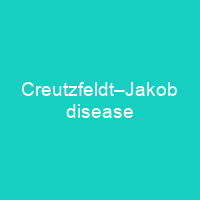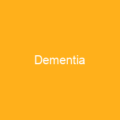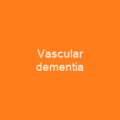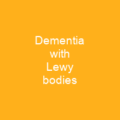CJD is caused by a protein known as a prion. Infectious prions are misfolded proteins that can cause normally folded proteins to become misfolding. Early symptoms include memory problems, behavioral changes, poor coordination, and visual disturbances. Later symptoms include dementia, involuntary movements, blindness, weakness, and coma. About 70% of people die within a year of diagnosis. There is no specific treatment for CJD. Opioids may be used to help with pain, while clonazepam or sodium valproate may help with involuntary movements.
About Creutzfeldt–Jakob disease in brief

The first symptom of CJd is usually rapidly progressive dementia, leading to memory loss, personality changes, and hallucinations. In most people with CJD, these symptoms are accompanied by involuntary movements,. The duration of the disease varies greatly, but sporadic CJDcan be fatalWithin months oreven weeks. About 15% ofPeople with CJd survive for two or more years. It is classified as a type of transmissible spongiform encephalopathy. It may appear without clear risk factors or it may be a clear risk factor for familial or familial form of the condition. It was first described in 1920 and can be diagnosed by an electroencephalogram, spinal tap, or magnetic resonance imaging. About 85% occur spontaneously, while about 7.5% of Cases are inherited from a person’s parents in an autosomal dominant manner. It affects about one per million people per year and typically sets in around 60 years of age. The condition can be inherited from people who are at a high risk of developing CJD in the first place. It’s thought to affect signaling processes, damaging neurons and resulting in degeneration that causes the spongomin appearance in the affected brain. When brain tissue is examined under a microscope, many tiny holes can be seen where the nerve cells have died. The number of misfolds protein molecules will increase exponentially and the process leads to a large quantity of insoluble protein.
You want to know more about Creutzfeldt–Jakob disease?
This page is based on the article Creutzfeldt–Jakob disease published in Wikipedia (as of Dec. 07, 2020) and was automatically summarized using artificial intelligence.







